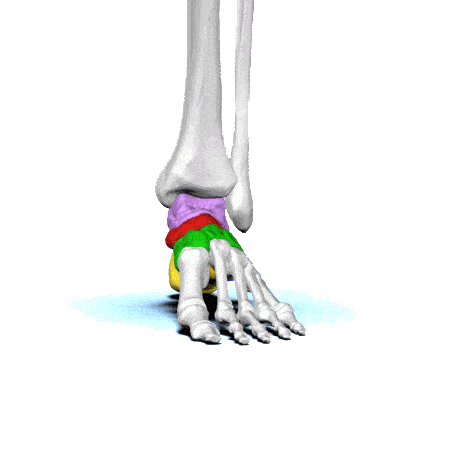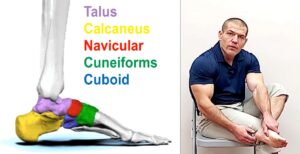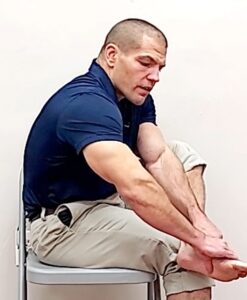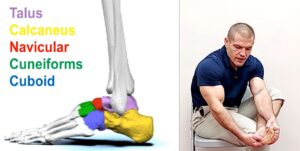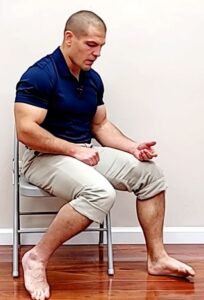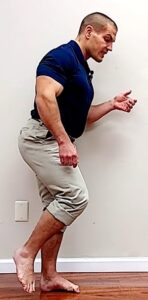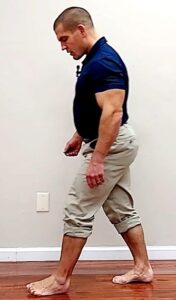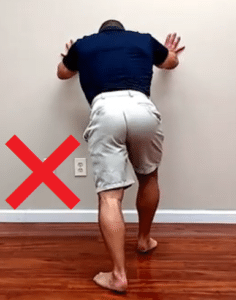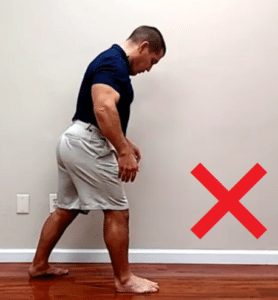Do You Have Plantar Fasciitis Pain That Won't Go Away?
Learn 7 little-known but effective plantar fasciitis exercises to relieve foot pain.
Table of Contents
- Why Plantar Fasciitis Exercises Often Fail To Relieve Foot Pain
- Brief Review of Plantar Fasciitis Anatomy
- Exercise 1: Subtalar Joint Mobility
- Exercise 2: Talonavicular Joint Mobility
- Exercise 3: Cuneiform Joint Mobility
- Exercise 4: Cuboid Joint Mobility
- Exercise 5: Intrinsic Foot Muscles Activation
- Exercise 6: Single Leg Balance with Arch Maintenance
- Exercise 7: Calf Stretch with Arch Activation
- What To Do When Plantar Fasciitis Exercises Still Don't Relieve Your Foot Pain

Why Plantar Fasciitis Exercises Often Fail To Relieve Foot Pain
Some people do plantar fasciitis exercises for weeks, months, or even years without seeing any substantial improvement in their pain.
It doesn't have to be that way though!
There are a few reasons why "typical" plantar fasciitis exercises may fail to relieve foot pain.
- They just focus on stretching the calves or massaging the plantar fasciia without a thorough consideration of the anatomy of the foot.
- Even the exercises that are good exercises are done with poor technique.
I'll cover both of those problems, plus solutions to each in the exercises in this post.
Brief Review of Plantar Fasciitis Anatomy
Before we get into the 7 little-known plantar fasciitis exercises, it helps to have a basic understanding of the anatomy of the foot and ankle complex.
Each of the exercises that follows targets a different part of the foot and ankle complex, so you need to have a basic understanding of the different components.
Here's a diagram of the bones of the foot and ankle.
These include the lower leg bones, the tibia (larger bone) and fibula (smaller bone)
Moving down to the ankle, the tarsal bones include the talus, calcaneus, navicular, cuboid, and the 3 cuneiform bones.
Past that, you have your 5 metatarsal bones, and then your toes (made of 14 phalanges).
With the exercises, we'll start from the subtalar joint between the talus and calcaneus and then move down toward the toes.
Then we'll move back up to the ankle joint itself (talocrural joint) in a standing position.
Exercise 1: Subtalar Joint Mobility
This plantar fasciitis exercise addresses the joint between your talus and your calcaneus, referred to as the subtalar joint.
Many people who have plantar fasciitis overpronate, or flatten their foot to much when they walk.
However, you can pronate at your rear foot (subtalar joint) and in your midfoot (mid-tarsal joint).
If your subtalar joint can't pronate, then you have to pronate from somewhere to get your big toe to the ground in order to push off when walking.
As a result, a stiff subtalar joint that doesn't pronate can result in overpronation in the midfoot and forefoot.
This in turn can cause plantar fasciitis pain when walking.
So here's how to do the exercise:
-
- Grasp around your ankle bones with one hand.
- Place the heel of your opposite hand on the inner side of your heel.
- Perform a subtle back-and-forth motion, focusing on pushing down toward the floor.
- Keep the motion small, about a minute, ensuring you feel a gentle, pain-free movement.
Exercise 2: Talonavicular Joint Mobility
Moving down to the talonavicular joint, place one on the navicular just past the calcaneus.
Wrap your other hand around the cuneiform bones. Then push upward on the navicular while pulling the cuneiforms down.
Exercise 3: Cuneiform Joint Mobility
For the next plantar fasciitis exercise, move down to the cuneiform bones.
Put your thumb on the cuneiform bone that is tender and sticks out. Then pull your metatarsals downward while pushing the cuneiform up.
This is very similar to the previous exercises except with a different hand placement.
Exercise 4: Cuboid Joint Mobility
This one is somewhat similar to the previous two exercises except you'll now work on the outer arch of the foot.
Place your thumb on the cuboid and press up while pulling the metatarsals down.
Exercise 5: Intrinsic Foot Muscles Activation
Now, actively maintain that arch by scrunching the toes and scooping your foot inwards.
This activates the deep intrinsic foot muscles and the tibialis posterior. These muscles help support your arch when walking and prevent you from overpronating.
Exercise 6: Single Leg Balance with Arch Maintenance
Once you've activated your foot arch muscles and your tibialis posterior, practice balancing on one leg.
Maintain the arch height while balancing on one leg.
Hold to something with your hand for balance at first, but as your balance improves, work toward doing this exercise without hands.
Exercise 7: Calf Stretch with Arch Activation
Finally, for a calf stretch, perform the scooping motion from exercise 5 to create an arch in your foot.
Then take a step, and hold the stretch for about a minute.
Many people make the mistake of allowing their foot to flatten when stretching their calves. Don't make that mistake!
Eventually, you want to be able to turn this into a dynamic walking exercise where you can maintain your arch height while walking.
What To Do When Plantar Fasciitis Exercises Still Don't Relieve Your Foot Pain
These exercises are similar to the manual therapy techniques we use at the clinic.
If you need more help for plantar fasciitis, connect with an orthopedic manual physical therapist near you.
If you're in the St. Louis area, we'd be happy to help at More for Life.
Just tap the button below to request an appointment with one of our specialist physical therapists.
Like this post? Check out some of our other posts about foot pain and plantar fasciitis.
When Is Foot Arch Pain Not Plantar Fasciitis?
How To Relieve Pain In Foot In The Morning



